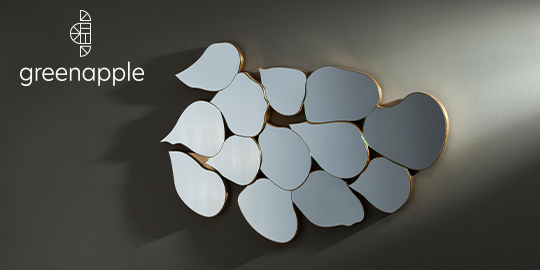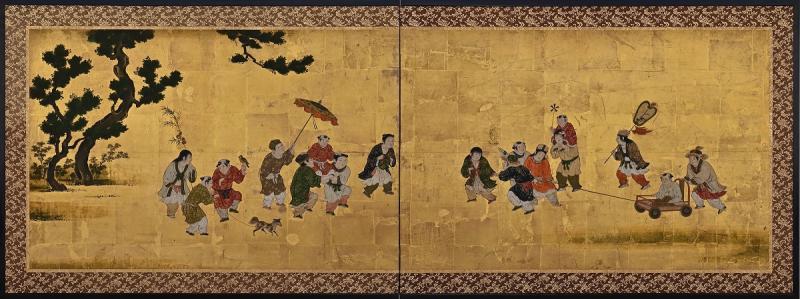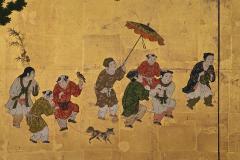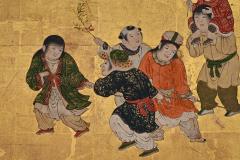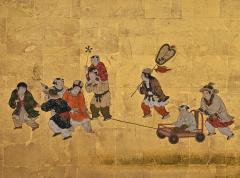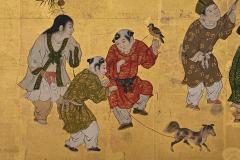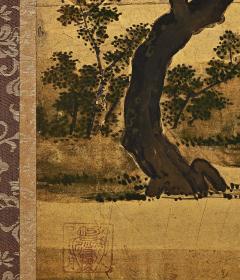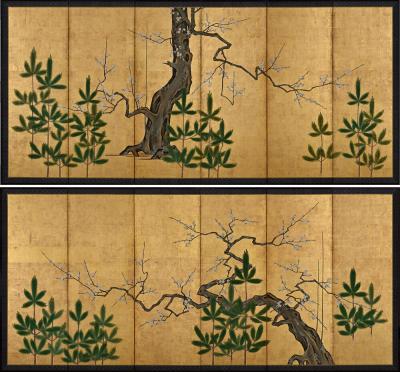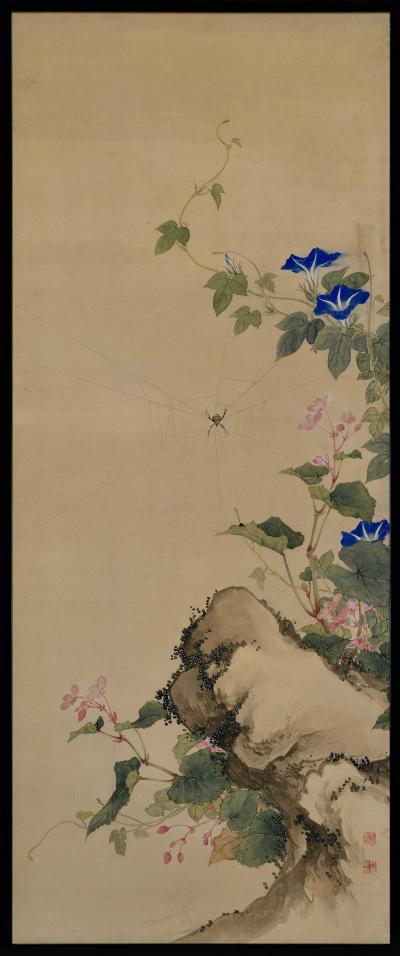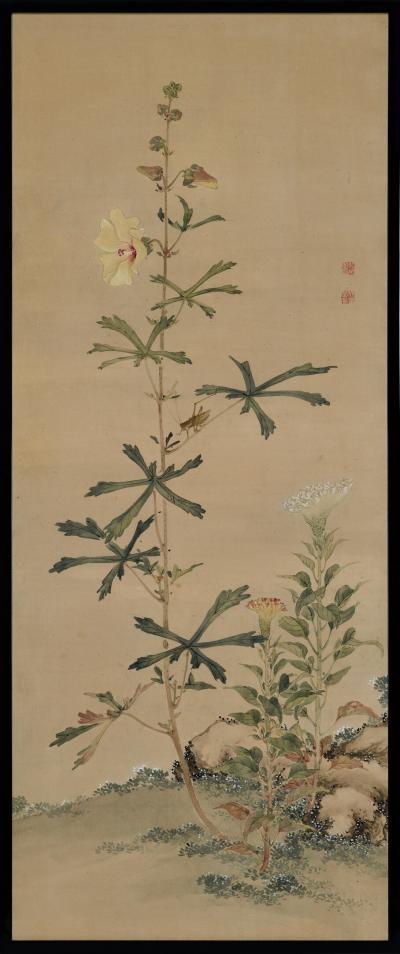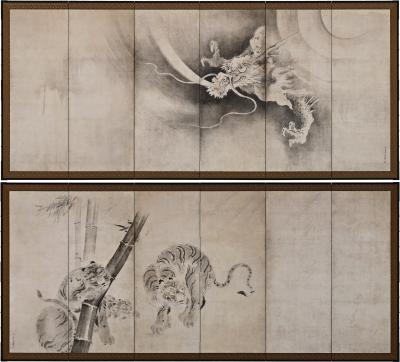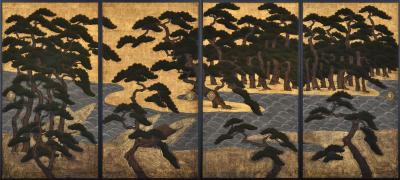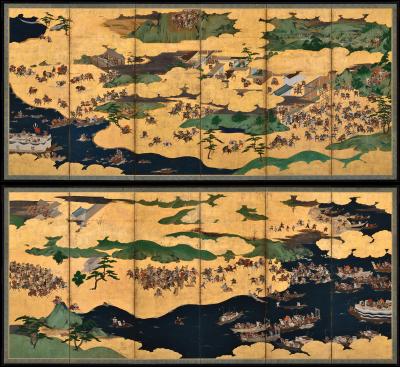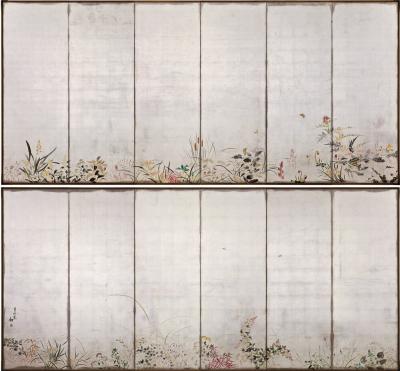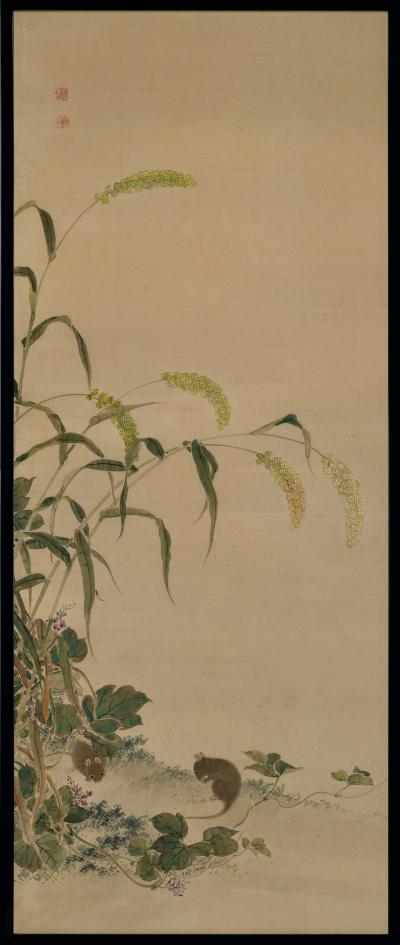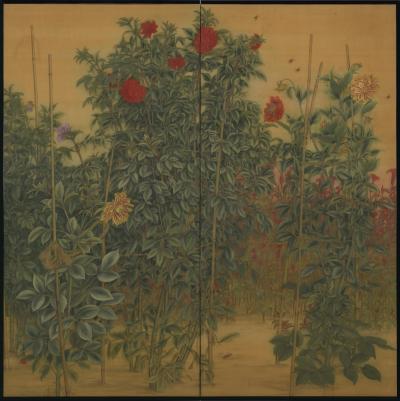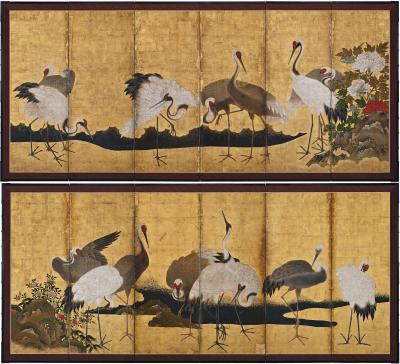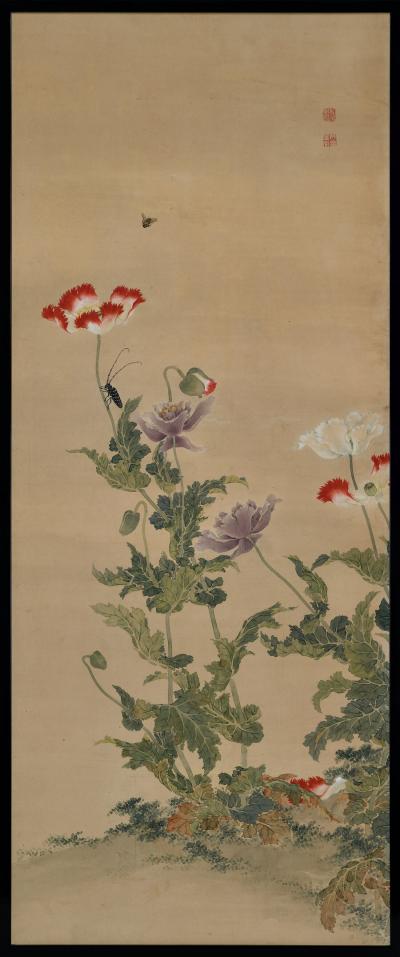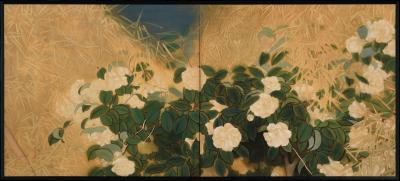Listings / Fine Art / Paintings / Figurative
17th Century Japanese Screen. Karako Asobi: Chinese Children at Play.
-
Description
Anonymous Kano school artist
17th century
“Karako Asobi: Chinese Children at Play”
A two-panel Japanese Furosaki screen. Ink, pigment, gofun and gold-leaf on paper.
Dimensions: H. 70 cm x W. 180 cm
Price: USD 16,000
This small Japanese Karako folding screen vividly depicts various games played by children wearing wearing elaborate Chinese T’ang dynasty costumes. They are dressed in plumed and tasseled hats, ornate jackets, baggy pants, and cloth slippers typical of T’ang period Chinese court dress. The children are depicted pulling a younger child along in a cart, carrying another child as if an important official, riding a wooden horse, leading a puppy and carrying a tethered bird. Executed in fine-quality pigments on gold leaf, the detail, variety and size of the figures is noteworthy. Also notable is the size of this screen itself, which denotes it as a Furosaki screen. A Furosaki screen is part of the equipment used for the Japanese tea-ceremony. It is traditionally placed on tatami mats behind the brazier highlighting the utensils and providing a focal point.
Karako is a Japanese term used in art with the depiction of Chinese children playing. Karako literally translates to “Chinese children”. “Kara” is the character for the Tang dynasty (618-907) of China, considered by many as the golden age of Chinese culture. “Ko” is a common suffix in Chinese that can mean “child” or “son.” The children symbolize health for sons & daughters and the innocence and joy of childhood. This screen may have belonged to a bride’s wedding trousseau, perhaps to inspire the creation of a large and joyous family.
It was painted by a member of the Kano school in the 17th century. Unarguably the most important family of painters in Japanese history, the House of Kano served as official painters to the imperial and military elite for over four centuries. The screen was originally neither signed nor sealed. At a later date a seal attributing the work to Kano Sanraku (1559-1635) was added. -
More Information
Period: Pre 18th Century Condition: Good. Styles / Movements: Asian Art Incollect Reference #: 755717 -
Dimensions
W. 70.87 in; H. 27.56 in; W. 180 cm; H. 70 cm;
Message from Seller:
Kristan Hauge Japanese Art, based in Kyoto's museum district since 1999, specializes in important Japanese screens and paintings for collectors, decorators, and museums worldwide. Contact us at khauge@mx.bw.dream.jp or +81 75-751-5070 for exceptional access to Japanese art and history.





